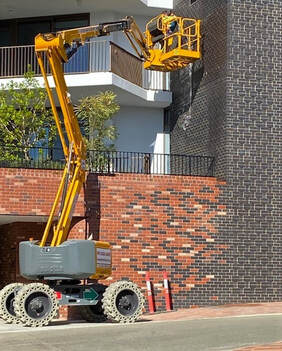|
Two weeks ago I featured an article ‘Negative cashflow – the death for many construction companies’ where I discussed how negative cashflow can destroy a company. Then last week I wrote an article ‘How to improve cashflow on your projects - Part 1’. This article investigates how to improve cashflow on your construction projects further. More tips for improving cashflow on construction projects1. Track the progress of the valuation claim or invoice through the client’s office to ensure there aren’t any hold-ups and those required to authorise the payments are available. This could particularly be a factor over holiday periods. 2. Where possible negotiate for earlier payments and to get paid for materials which are on site but not built-in. 3. Get the client to release retainage money as soon as possible. Many contracts have cash retention held which could be up to 10% of the value of work done. The project team needs to understand what needs to be done to obtain the release of this retainage money. Often projects are completed 99%, even occupied by the client, yet because the contractor isn’t completed all the punch list items or contract documentation the retention money isn’t released. I’ve known construction projects drag on for several months waiting for the project team to complete all outstanding matters - all the while the client is holding the retention money which in some cases could be millions of dollars. Will your project be finished on Time? This checklist will help you. 4. Attend to defects and claim final retainage money as soon as the end of the defects liability period is reached. Usually the final retention money is only released after the completion of the defects liability period which could be three months, a year, or even longer after practical completion. Delaying practical completion delays the start of this period. Furthermore, contractors often forget to ask the client for their final inspection at the end of the defects liability period, or they take their time attending to defects which delays the release of retention money even further. Ensure you diarise when the defects liability period for your project ends. Then arrange to have the client inspect the facility, you complete any punch list items and then request the retention money be returned. 5. Sometimes clients may be amenable to replacing the retention money with a retention bond or to releasing part of the retention money on sectional completions. 6. Ensure construction materials and equipment are built into the project soon after arriving on the project. Often construction projects have large expensive items of equipment that the client only pays for when built in. But the contractor normally has to pay for the item in full once it leaves the factory or when it arrives on the construction project. In this case the project team should ensure the item is built in as soon as possible so the client can be invoiced. Also where possible try and ensure the item arrives ‘just-in-time’ so it doesn’t stand on the site longer than required. Where possible avoid arranging material deliveries for the end of the month (where the supplier will invoice in that same month), but rather at the start of the following month. Delaying a delivery by a couple of days could mean paying for it a month later. 7. Maximise the valuation claim. Sometimes monthly valuation claims are due say by the 25th of the month, which often means measurement and calculations of work completed is prepared by the 23rd. This means that 7 or 8 days of construction work isn’t included in the valuation. It’s often possible to negotiate with the client that an estimate is included in the valuation of the work up to the end of the month. Sometimes, the client only looks at the valuation claim at the end of the month so it may be possible to anyway add in an estimate of work that you are sure will be completed before the client verifies your claim. I generally, where possible, try and over claim my monthly valuations. Money sitting in our bank account is always better than sitting in the clients. The importance of maximising monthly valuations on your construction project 8. Try and negotiate payment terms with your suppliers and subcontractors that are similar to those that you have with your client. 9. Try and negotiate better payment terms when pricing and negotiating the construction project. There are steps that can be taken when preparing your quotation and negotiating the terms of the contract that can have a profound effect on your cash flow. I will discuss this next week. Improve cash flow. Implement these strategies when pricing your next project "If you decide to know the main principles of construction projects and companies this book is for you. Inside it you will find many practical experience of the author." (Reader on Amazon) Improve cashflow on your construction project today"A strong positive cashflow means your construction company can grow" Taking a few simple steps on your construction project can drastically impact your company’s cashflow. A strong positive cashflow means the company can grow, take on bigger construction projects, purchase new equipment, pay its suppliers and subcontractors on time and pay your salary. #constructionfinance #constructionmanagementtips #contractors Other useful articles: Construction project variations - have you included all the costs? The construction project manager’s financial duties Financial checks and controls on construction projects  (Paul Netscher is the author of the acclaimed books ‘Successful Construction Project Management: The Practical Guide’ [a required text for Bachelor of Construction Management at some universities] and ‘Building a Successful Construction Company: The Practical Guide’. Both books are available in paperback and e-book from Amazon and other retail outlets. This article is adapted from information included ‘Building a Successful Construction Company’. To find out more about how Paul Netscher can do for your company Read) © 2022 This article is not to be reproduced for commercial purposes without written permission from the author.
construction management construction project management
3 Comments
4/5/2015 03:58:14 pm
A nice and thorough list of suggestions for better managing construction project cash flow.
Reply
Paul Netscher
6/5/2015 02:24:15 am
Thanks for your suggestion. Often contractors are so focussed on getting the project done that they forget to look outside the box, or neglect to claim back money from the government or other agencies.
Reply
18/4/2018 06:07:59 am
yeah this post is actually good and I have learned
Reply
Leave a Reply. |
Archives
June 2024
Note: We welcome genuine comments, especially comments that add additional information to the subject matter in the article. We however reserve the right to remove inappropriate comments, which includes comments that have nothing to do with the subject, comments that include inappropriate language, and comments that are an advertisement for a product or company, or which include an advertising link. Comments must be in English. We will not enter into discussion on why a particular comment was removed.
CategoriesCopyright 2016 - The attached articles cannot be reproduced for commercial purposes without the consent of the author.
The opinions expressed in the attached articles are those of the writer. It should be noted that projects are varied and different laws and restrictions apply which depend on the location of the contractor and the project. It's important that the reader uses the supplied information taking cognisance of their particular circumstances. The writer assumes no responsibility or liability for any loss of any kind arising from the reader using the information or advice contained herein. "I have what I consider some of the best books on construction management."
Books are available from: Amazon.com Amazon.co.uk takealot.com kalahari.com Amazon.in Amazon.de Amazon.fr Amazon.it Amazon.com.au Powell's Fishpond uread bokus Amazon.ca Amazon.es Other retail stores Available in paperback or on Kindle "28 YEARS OF CONSTRUCTION PROJECT MANAGEMENT EXPERIENCE, DEVELOPING SUCCESSFUL CONSTRUCTION PROJECT MANAGERS AND BUILDING SUCCESSFUL CONSTRUCTION COMPANIES"
|





 RSS Feed
RSS Feed




